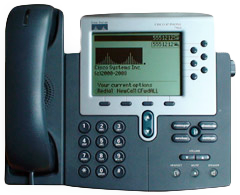 The VoIP marketplace is poised to triple over the next three years. In fact, new analysis from Frost & Sullivan shows that the North American market VoIP access and SIP trunking services earned revenues of $2.83 billion in 2013. As those revenues reach $9.35 billion by 2019, Session Initiation Protocol (SIP) will play an increasingly important role in day-to-day business operations in the VoIP marketplace.
The VoIP marketplace is poised to triple over the next three years. In fact, new analysis from Frost & Sullivan shows that the North American market VoIP access and SIP trunking services earned revenues of $2.83 billion in 2013. As those revenues reach $9.35 billion by 2019, Session Initiation Protocol (SIP) will play an increasingly important role in day-to-day business operations in the VoIP marketplace.
Growth and the Case for SIP Monitoring
This projected VoIP growth will also grow SIP dependency and complexity, which will result in SIP-related issues. For example, if your organization uses a SIP-based VoIP solution its likely you’ve experienced some of these issues in the form of dropped calls, or the inability to receive calls.
IP-based networks, which love data, can be a little harsh when it comes to voice. Unlike email or Internet surfing, a voice call is a steady stream of data. If those data packets are disrupted, the call experiences latency, jitter, packet loss, and can drop out completely. What appears to be a perfectly stable network may have issues that are only detected if you’re using SIP to send a VoIP call over it.
Based on the scenario above, it’s easy to see why a general network monitoring solution might not cut it when it comes to monitoring SIP for VoIP calls—the solutions are not necessarily looking for the right things. A SIP monitoring solution focuses specifically on proactively monitoring the ability of SIP-based VoIP infrastructure components to establish calls.
Monitoring for SIP SLAs and VoIP SLAs
 A SIP monitoring service tests a SIP-based VoIP system by making SIP test calls and measuring the results. SIP monitoring can be provisioned as either an extension on the VoIP system itself or as a client. SIP monitoring then places real SIP calls to a specific number at defined intervals using a specified SIP server with certain parameters. In addition to detecting whether a SIP call can be placed or received, SIP monitoring measures and tracks the results of that call. If a SIP error is detected an alert is sent, which includes actionable diagnostic information. Performance data is also collected during the SIP monitoring and is helpful for long-term optimization of the VoIP service. Additionally, the data is often used for establishing and enforcing service level agreements (SLAs) between SIP trunk providers and SIP service vendors and their SIP customers.
A SIP monitoring service tests a SIP-based VoIP system by making SIP test calls and measuring the results. SIP monitoring can be provisioned as either an extension on the VoIP system itself or as a client. SIP monitoring then places real SIP calls to a specific number at defined intervals using a specified SIP server with certain parameters. In addition to detecting whether a SIP call can be placed or received, SIP monitoring measures and tracks the results of that call. If a SIP error is detected an alert is sent, which includes actionable diagnostic information. Performance data is also collected during the SIP monitoring and is helpful for long-term optimization of the VoIP service. Additionally, the data is often used for establishing and enforcing service level agreements (SLAs) between SIP trunk providers and SIP service vendors and their SIP customers.
VoIP is a rapidly growing marketplace and the VoIP systems themselves are becoming increasingly complex as these Voice over IP networks grow. VoIP systems continue to become more complex and interrelated, and more customers mean new feature sets are continually being added. In turn, additional business interactions and growing customer expectations mean more significant SIP and VoIP SLAs are put in place. With these higher expectations, SIP SLAs, and VoIP complexity becomes a growing requirement for VoIP stability, performance and high availability. A SIP monitoring solution will help ensure your VoIP system is continually optimized, detect SIP issues, and aid in enforcing VoIP SLAs.

